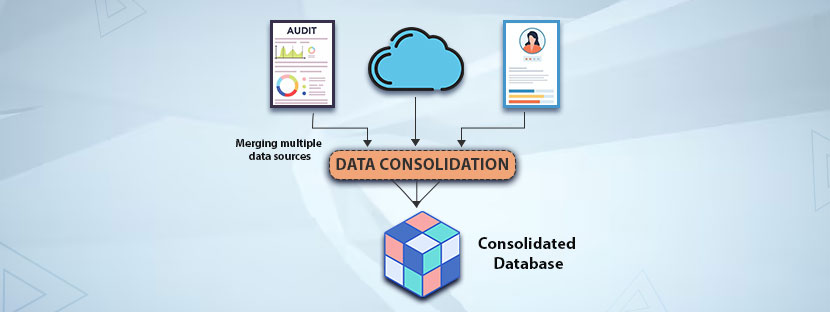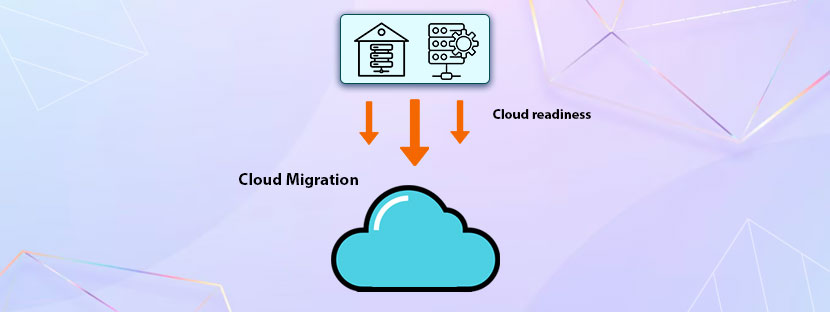Creation of the ICP (Ideal Customer Profile) is the first step of developing the marketing strategy. Later on, a value proposition is created to attract ICPs. That’s the core of the initial marketing plan.
ICPs, those who connect through your marketing channels, are your leads. As you are in the B2B industry, these are your B2B leads.
Strategizing your ICPs can provide you with a good flow of leads into your business. You just need to select the perfect audience for your ICP listing. Let’s see how you can do that through this detailed blog.
Ready to explore it?
Defining a Precise Ideal Customer Profile (ICP)
To have a crystal clear understanding of your ideal customers, you need a clear definition of ICP.
In B2B or Account-Based Marketing, an Ideal Customer Profile is a description of a company or business that you believe to be a perfect fit for the service or product you sell. The alternative name for ICP is Ideal Buyer Profile. You prepare these profiles to define the best possible customers of your business.
ICPs are fictitious in nature. Some define it as their dream leads. As you can guess now, it’s the ideal form for your customers. These are the kinds of leads that have a perfect budget, scale, and location. Your sales team will easily interact with these leads and close deals.
Well, there’s another way to define ICP on a negative or forceful connotation.
Suppose one company has worked with you previously and now wants you not to work with their competitors. So, this company will become your ideal customer. Besides that, if there is any legal restriction that limits your reach, then it would impact your ICP creation.
Now move on to the main purpose. The main reason for creating ICPs is to help your sales team focus on the leads that can easily be acquired. Simply, you can invest time and resources in a lead that has a high potential to become your customer.
Difference Between ICP and Buyer Personas
Most marketers often mix ICPs and buyer personas together. As they think they are the same concepts. But in reality, they’re not the same thing. Both concepts influence one another.
So, what’s a buyer persona?
Unlike ICPs, buyer personas are semi-fictional characters that define your perfect customers. You can make your buyer persona using customer insights and market research statistics. One business can have multiple buyer personas to segment different customers. It happens because real insights are taken into consideration when creating buyer personas. Businesses cannot have customers who come with identical needs, especially in the B2B domain.
Creating buyer personas helps develop a successful marketing strategy as it reflects a “real-life” scene.
Now mixing ICPs and buyer persona together…
Think of the ICP as a company you have targeted, and consider your buyer personas to be working there. In B2B, we target companies but talk to the people who work there. So that’s how buyer personas come into the picture.
For example, you’re a medical supplier company and your ICPs are hospitals and private clinics. So, the buyer personas whom you need to talk to are the operations managers working in those clinics and hospitals.
Hence, you need to create ICPs and buyer personas simultaneously to frame out your marketing plan more effectively. It will make your sales and marketing team work tremendously good.
Sizing and prioritizing Total Addressable Market (TAM)
What’s the size of your market? Have you ever measured it?
Understanding the size of your total addressable market opportunity is the first step in building an effective marketing strategy. For that, you need to calculate the value of your total addressable market. It will show the maximum revenue potential of your business if you keep targeting the same market.
Prioritizing the TAM boosts forecasting capacity, expands plans, aligns marketing with sales, and does other things to provide you with the most valuable opportunities.
i.e., TAM means the total revenue opportunity available for your product or service if you capture 100% of your ICP base.
Why do companies calculate TAM?
Without calculating TAM, it’ll become your gut feeling whenever you make any marketing decision. But it will be a rational choice if you calculate TAM, as it benefits you in many ways. Here are a few glimpses that TAM can help your company with;
Do you know the differences between TAM, SAM, & SOM?
The most commonly confused terms associated with TAM are SAM and SOM. Let’s understand the difference between them here.
| TAM | SAM | SOM |
|---|---|---|
| Total Addressable Market | Serviceable Available Market | Serviceable Obtainable Market |
| Total demand for your services or products if you completely capture your ICP base. | Represents the portion of your TAM that you can realistically cover based on your current product features and location reach. | Reveals the share of your SAM that you expect to cover using all your resources, including sales capacity, brand awareness, etc. |
TAM Calculation
There are many methods of calculating TAM available here, but the most preferable ones are;
✓ Top-Down Approach
✓ Bottom-Up Approach
Let’s calculate TAM using both of these methods.

i. Top-Down Approach
It’s the quest method to calculate the total addressable value of the market. Because it’s based on data that third-party organizations collect. You need to do the secondary research on it. Let’s see how it happens.
First of all, you need to take the total number of potential customers in a B2B dataset. Thereafter, apply some filters there, on like demographic or geographic flyers, to narrow down your results until you reach a market subset. You can take research datasets from any reputable third-party company for this purpose.
ii. Bottom-Up Approach
Whatever you did in the top-down approach, you have to reverse it to understand the bottom-up approach.
To start this, you have to select a smaller market segment. Later on, you need to extrapolate it to discover your total potential customer base. You have to bring your own primary research into it.
Segmenting Accounts and Personas Effectively
Persona segmentation is the advanced form of data segmentation in marketing. It’s a systematic approach to categorize customers into distinct personas based on their behavior, needs, preferences, and motivations. A group of buyer personas is an essential need to segment customers.
Persona segmentation goes deeper into understanding your customers. Segmenting customers based on demographic categories only works at the surface level. But segmenting buyer persona while considering underlying facts such as pain points, purchase behavior, etc. This brings the human-centric nature of the marketing strategies that help marketers to cover each group’s specific preferences and needs.
For example, demographic segmentation helps you select female customers who are between 25 to 30 years of age and earning $60K to $70K a year. However, on the other hand, persona segmentation helps you find “health-conscious women working professionals who want to try fitness apps and like to consume fitness content more on their feeds.”
Difference Between User Segments and User Persona
| Point of Differences | User Segments | User Persona |
|---|---|---|
| Outcomes | Targets broader groups | Reveals insights about customer mindsets. |
| Data needed | Primary or quantitative data (age, location, capacity of purchase, etc.) | Qualitative data (interests, frustration, motivations |
| Applications | Targeting the audience and allocating resources | Developing personalized content and enhancing customer experiences |
How to conduct persona segmentation
In marketing, there are many ways a business can segment its buyer personas. Some of the popular measures are;
Product engagement
The ultimate thing that customers receive is a product or a service. Before that happens, customers engage with the products and services in many layers. Understanding these engagement layers helps marketers segment buyer personas into different categories. The following example can make this concept clear to you.
- Daily viewers: These people watch your content on a regular basis whenever you upload anything new on social media or your website. These audiences are easier to target as you can send them personalized content based on their likes.
- Weekend bingers: These people stream your content in bulk. Therefore, you need to keep recommending lengthy forms of content that they can consume over their weekends.
- Occasional viewers: These people need reminders from your end. Sending out emails can help.
Usage of product features
Rational customers (mostly) consider features first when they purchase something. But it’s also a fact that some of the customers only utilize the basic functions. Therefore, segmenting the customers based on feature exploration and usage can help you distribute proper content to your audience. Furthermore, it helps to develop upsell capacities, retention strategies, and many more.
Segregate your CRM into two categories
Basic users: These people only explore your products and services from the surface level. Thus, you have to assist them through basic functioning and support. Avoid sending them the advanced feature
Power users: These people want to explore the advanced layers of your products and services. Thus, you must not suggest to them the basics of your products and services. You have to provide them with a complete understanding of advanced and complex features.
Customer lifecycle stage
Embrace your customer journey in each stage to make a difference. Every customer is different, and their needs are different. They connect through your brands and explore a journey overall. Segmenting buyer personas based on lifecycle stage can make your targeting process strong. Differentiating customer lifestyle stages can help you explore different types of engagements.
For example, new prospects need more educational content or product demonstrations than other types of engagements. On the other side, active customers need more attention from your side. You have to keep them engaged with your retention strategy, i.e., offering loyalty rewards or similar things.
Preference of channels
Again, different age groups or professionals prefer different communication channels. They like to receive your content in a certain way, as per their convenience. As a business, you need to prioritize it.
Suppose your target audience is mainly Gen Z, then you have to connect with them via social media platforms like TikTok or Instagram. Similarly, if your audience is primarily the B2B audience, you need to connect with them via email and maintain professional gestures. Thus, understanding your customer’s preferred communication channel can make your outreach strategy strong.
Values and needs
Separating personas based on needs and values is one of the best ways you can bring focus to your marketing strategies. Different personas have their unique motivations and pain points. Addressing them based on what they are looking for is the best way you can help them. In this case, understanding values and needs is your way.
Financial potential
One-time buyers are different, and loyal customers are different. Basically, it’s the financial intent that you have addressed here. Understanding the financial potential can make things different. It helps you segregate personas and frame a suitable acquisition strategy.
For example, if it’s a high-value persona, then you can spend a major chunk of your marketing budget to acquire and close the deal. On the other hand, if the persona is just a one-time buyer, then you’d like to place less value on it in terms of spending your marketing budget on it.
Differentiating in Crowded Categories
After creating your ICP and segregating your targeted personas, you have to think about differentiating your business.
Brand differentiating is important, and you have to provide your attention here. Brand differentiation is an aspect that makes your business models unique and distinct from the rest of the competition. It provides a competitive edge to your brand and makes your brand line stand tall in the crowded market.
Here’s the few points that make your brand unique and compelling
» Unique offerings
» Showcasing your expertise and skillsets
» Articulate your brand story
» Be a problem solver
» Becoming an industry disruptor
Become an irresistible brand that can influence your ICPs and make all sales happen automatically. Brand differentiation is extremely important to capture more market share or command a higher price. It can provide you with a significant margin. Thus, you have to focus on building that.
Articulating a Clear, Outcome-Focused Value Proposition
Wherever any conflict arises between your sales and marketing team, the value proposition will always come as a conflict-solver. A proper value proposition is more than just a catchy text. It’s a strategic tools that articulate how your products or services will solve your customers’ problems.
To bring a clean perspective to your audience, you have to have a clean, clear, and output-focused value proposition.
Here are a few things that can help you develop a powerful value proposition;
i. The clean and concise nature of the value proposition makes your target audience easily understand your offerings. Plus, it would also help your internal team to understand it properly.
ii. Address directly to your customers’ needs, desires, and pain points through your value proposition statement.
iii. Highlight your unique selling points that set your brand apart from the rest competition.
iv. Add evidence wherever you need throughout your value proposition statement. Use data, testimonials, case studies, etc.
Tailoring Positioning to Multiple Stakeholders
Various levels of stakeholders are involved in your project. You need to position them appropriately and fix a proper channel to communicate with them.
First, you have to conduct a stakeholder analysis. Consider factors like demographics, interests, roles, responsibilities, knowledge base, etc. Assessing your B2B stakeholders forms the basis of your communication plan.
Next, you need to segment your stakeholders into groups. For example, internal stakeholders and external stakeholders. The language and tone will change whenever you try to communicate with external stakeholders. For the internal team, you can make all communication in an informal tone. But when it comes to communicating with external stakeholders, your language and tone will become more professional and direct.
Following these strategies can make your ICP targeting strong and efficient.











